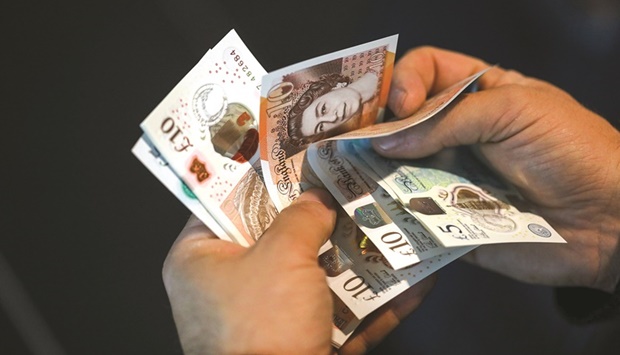The pound has pulled off a fighting comeback from a two-year low against the dollar yet the UK’s markets are looking more bruised as evidence of a sharp economic slowdown mounts.
The currency has gained for two weeks to end a month of losses, mostly thanks to ebbing demand for the dollar as a haven rather than positive local factors. The pressure on Britain’s companies is growing after an index of UK private sector growth unexpectedly slid in May.
For some strategists, much of the bad news is now priced in. For others, another period of reckoning for the pound is likely. Doubts are rife over just how much the Bank of England, which next meets in mid-June, can keep hiking borrowing costs given a cost-of-living crisis and collapse in consumer sentiment.
“Overall the UK’s vulnerable position in terms of exposure to a slowing Europe and China, more dovish central bank and weak balance of payments suggests to us the path for pound-dollar is lower towards $1.20,” said Jordan Rochester, a strategist at Nomura International.
A recent Confederation of British Industry survey painted a gloomy picture of wilting demand and sagging profits. Inflation – already at a 40-year high – may not have peaked. And a new government levy on energy companies could weaken investor sentiment, with oil major BP Plc already warning it will reconsider its capital expenditure plans.
While the BoE’s outlook is becoming more murky after back-to-back rate increases, the European Central Bank looks set to start hiking soon, and that could also send sterling lower against the euro. Deutsche Bank AG strategist Shreyas Gopal recommended clients buy euros, pointing to a target of 88 pence by the end of the third quarter. It was at about 85 pence on Friday.
The pound only tells part of the story about the health of UK Plc. Bloomberg News will use a regular series of charts to show what rates, credit and stock markets are signalling. The weakness in the pound, still down nearly 7% this year, has bolstered the exporter-heavy FTSE 100 stock index, particularly in contrast to the more domestically-focused FTSE 250. Still, strategists in a monthly Bloomberg survey see no more upside for the benchmark this year, compared with a return potential of 9% for the Euro Stoxx 50.
Commodities prices, an important driver behind the FTSE 100’s performance given firms such as Shell Plc and Glencore Plc, are stalling as Chinese demand shows signs of weakness. Energy company profits could also suffer given the so-called windfall tax.
A warning sign for the health of companies is a gauge of risk in the sterling junk bond sector, which comprises mainly local borrowers. That’s approaching 600 basis points for the first time since the pandemic’s early stages, meaning higher costs. It’s also thrown the market for new bond sales into disarray, with high-profile financing deals grinding to a halt.
Bloomberg News reported this week that UK retailer Matalan Ltd is facing challenges in refinancing its debt as a maturity deadline looms. Banks have struggled for more than six months in some cases to sell financing deals for high-profile buyouts including Wm Morrison Supermarkets Plc.
There are some positives for the UK economy: it has a strong labour market and the government’s £15bn ($19bn) spending spree announced in recent days will help the hit to households from higher energy prices. Yet it’s unlikely to boost sentiment in UK data surveys or the path for lower growth ahead, according to Nomura’s Rochester.
There are also warnings it could further stoke inflationary pressures, particularly as Chancellor Rishi Sunak hinted in an interview on Friday that another massive handout could follow in 2023. That’s led bets on the number of BoE rate hikes to tick up again for 2022.
Money markets are pricing five 25 basis points hikes by December, though that’s still below the 150 basis points seen earlier in May. Forward prices drive home the bleak longer-term outlook, showing traders expect the BoE to end up cutting rates in two years. “It still looks very likely that the UK economy will fall into recession, or at least experience a period of extremely weak growth,” said Standard Bank strategist Steven Barrow.

A man holds pound sterling banknotes in an arranged photograph in London. The pound has pulled off a fighting comeback from a two-year low against the dollar yet the UK’s markets are looking more bruised as evidence of a sharp economic slowdown mounts.


